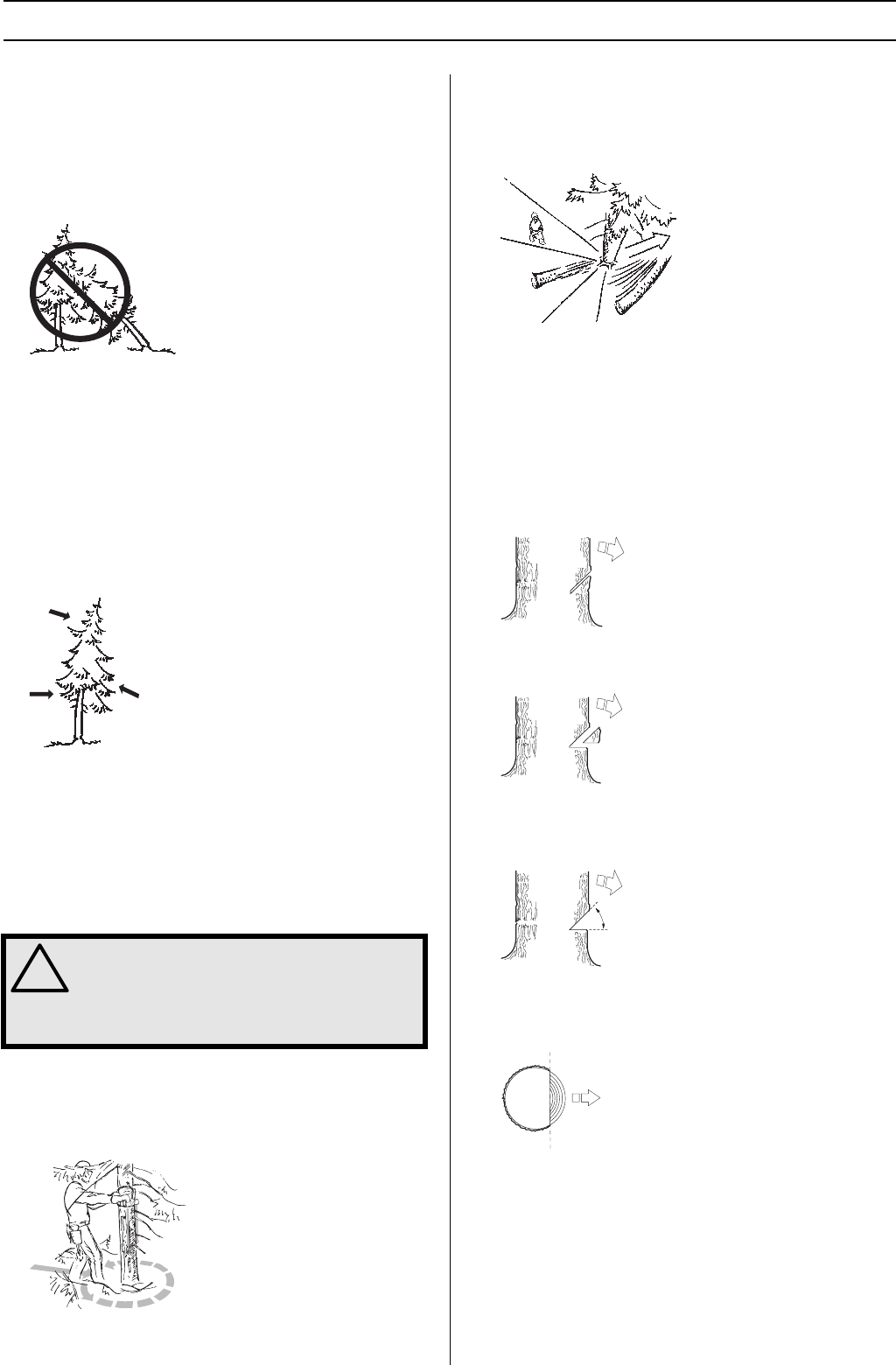
English – 21
SAFETY INSTRUCTIONS
Felling direction
The aim is to fell the tree in a position where you can limb and
cross-cut the log as easily as possible. You want it to fall on
ground where you can stand and move about safely. The main
point to avoid is letting the tree fall onto another tree. See
instructions under the heading Freeing a tree that has fallen
badly.
Once you have decided which way you want the tree to fall
you must judge which way the tree would fall naturally.
Several factors affect this:
• Lean of the tree
• Bend
• Wind direction
• Arrangement of branches
• Weight of snow
You may find you are forced to let the tree fall in its natural
direction because it is impossible or dangerous to try to make
it fall in the direction you first intended.
Another very important factor, which does not affect the felling
direction but does affect your safety, is to make sure the tree
has no damaged or dead branches that might break off and
hit you during felling.
Clearing the trunk and preparing your retreat
Remove any branches that are in the way. To do this it is best
to work from the top down and keep the trunk between you
and the chain saw. Never limb above shoulder height.
Remove any undergrowth from the base of the tree and check
the area for obstacles (stones, branches, holes, etc.) so that
you have a clear path of retreat when the tree starts to fall.
Your path of retreat should be roughly 135 degrees away from
the intended felling direction.
Felling
Felling is done using three cuts. First you make the directional
cuts, which consist of the top cut and the bottom cut, then you
finish with the felling cut. By placing these cuts correctly you
can control the felling direction very accurately.
Directional cuts
To make the directional cuts you begin with the top cut. Stand
to the right of the tree and cut on the pull stroke.
Next make the bottom cut so that it finishes exactly at the end
of the top cut.
The directional cuts should run 1/4 of the diameter through
the trunk and the angle between the top cut and bottom cut
should be 45°.
The line where the two cuts meet is called the directional cut
line. This line should be perfectly horizontal and at right
angles (90°) to the chosen felling direction.
!
WARNING! During critical felling operations,
hearing protectors should be lifted
immediately when sawing is completed so
that sounds and warning signals can be
heard.


















